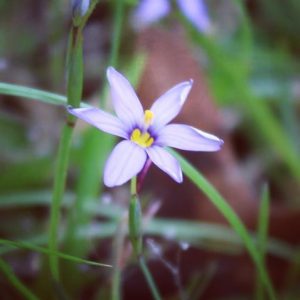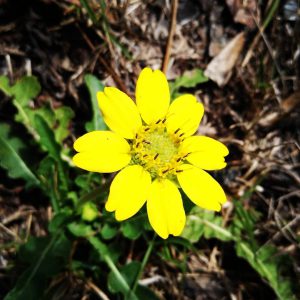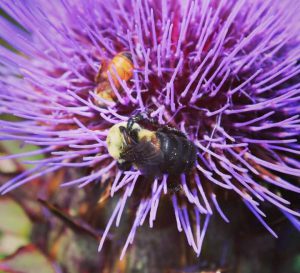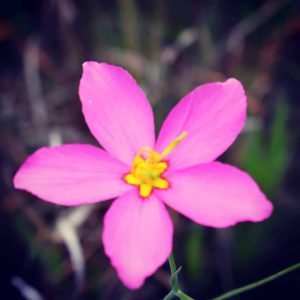According to Legend, Juan Ponce de Leon arrived in our fair state on April 2, 1513 and promptly named it La Florida, or “The Land of Flowers.” Perhaps he was honoring the Easter Holy Week in which he landed. Perhaps he was the first Marketing Specialist in Florida naming the first gated community, but I cannot help but believe that he was impressed with the springtime array of flowering native beauties.
It is not completely determined exactly where Leon landed, (St Augustine is really just a possibility) but we know for sure it wasn’t on the west coast of Central Florida. Let’s become explorers ourselves, and discover the distant descendants of the springtime flowers that were blooming in our area while Leon’s feet hit Floridian soil on the other coast.
If we don our Wildflower Explorer gear: a good camera, sunscreen, a hat, good hiking shoes and water, we can embark upon a floral expedition right in our own backyards, parks and conservation lands. Let’s discover the native Floridian flowers!

Bristle Thistle, Circium Horridulum, is an amazing spring bloomer. It is also called Horrid Thistle, because of its protective thorny structure. Look, but don’t touch! The open, flat purple face provides nectar for bees and butterflies. It also provides a nice landing where the pollinators hang out a good long time and pose for photos! You can find these large beauties at the edge of wetlands. As the weather heats up they will be replaced with their smaller-faced cousins, Nutall’s Thistle.
Manyflower Beardtongue, Penstemon mutiflorus, could easily be overlooked as a weed, despite its beautifully descriptive name. Don’t discount our “weeds!” Weeds are a matter of opinion. We tend to discredit the free wildflowers out there working hard to attract pollinators. Let’s take a closer look at them. This beautiful wildflower is loaded with dainty white flowers that have long, hairy filaments protruding from the corollas. Hence the name “Beardtongue.” Planted in mass or mixed in with other wild ones, you will have a lovely addition to your wildflower garden. You will find hummingbirds and long-tongued bees visiting you.
Commonly found in scrubby or dry flatwoods, Shortleaf Gayfeather, Liatris tenuifolia, or Blazing Star, stands tall as a proud purple sentries. You can incorporate Liatris into your wildflower garden by purchasing seed. It will attract butterflies and bees during its short stay in the Spring. Don’t worry this perennial will come back next Spring!

Oakleaf Fleabane, Erieron quercifolius, is a very common “weed” found in pine flatwoods and disturbed area. This tenacious wild one will attract native bees, which are vital to a thriving ecosystem.
Blue-eyed Grass, Susyrinchium angustifolium, is one of our blue flowers of Spring. It is not actually a grass but is in the orchid family. It’s tiny blue flowers with yellow centers make a stunning groundcover. They are happy in moderately dry, sandy or loamy soils. You can find these happy harbingers of Spring at native nurseries to add to your wildflower collection.
After discovering those five descendants of our ancient native wildflowers, you can also be on the lookout for some other gorgeous off-spring, such as Florida Greeneyes, (Berlandiera subacaulis) Sandhill Milkweed, (Asclepia humistrata) Largeflower Rose Gentian or Marsh Pink, (Sabria grandiflora) Rose Rush, (Lygodesmia aphylla) and Skyblue Lupine (Lupinus diffuses.)


Take only photographs of these blooming beauties. Some of them are protected by law. All of them should be left to provide for the wildlife in their natural habitat. Research seed options as well as native plant suppliers.
There are many more Florida wildflowers blooming in all of our seasons. There is a world of cooperation between the plant life and the pollinator life. All we need to do is stop, look and observe to become a Wildflower Explorer!
You can find out more information from the Florida Wildflower Foundation at Floridawildflowers.org and the Florida Association of Native Nurseries at www.fann.org
Please learn more about Florida-Friendly Landscaping at www.ffl.ifas.ufl.edu
Also keep in touch with FFL activities in Hernando County at facebook.com/HernandoFFLProgram and the Hernando County Government YouTube channel.
Special thanks to Lilly Browning, Florida-Friendly Landscaping Coordinator with Hernando County Utilities for writing this post.
Header photo credit- Tyler Jones with UF/IFAS Communications.
 1
1
